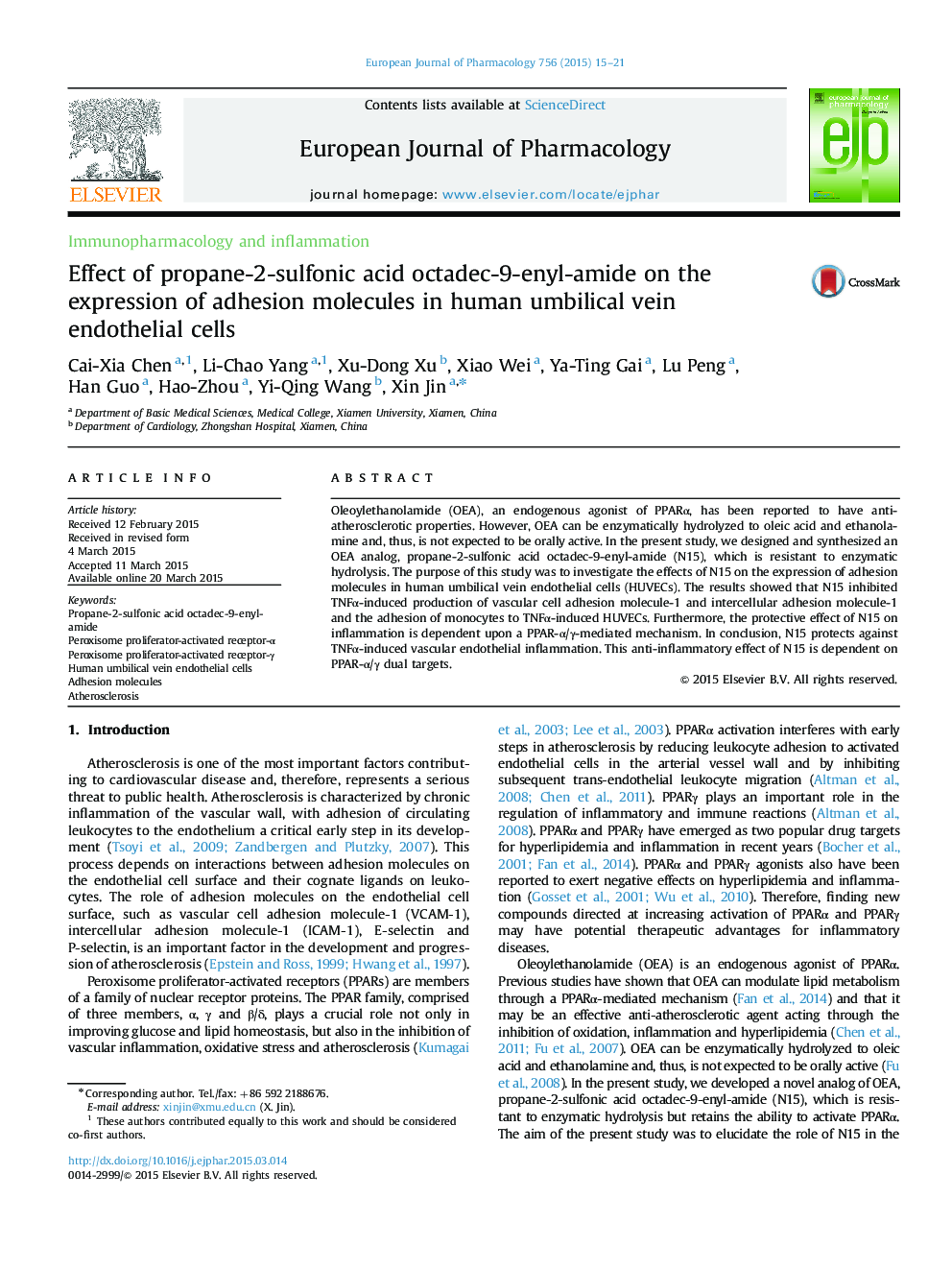| Article ID | Journal | Published Year | Pages | File Type |
|---|---|---|---|---|
| 2531479 | European Journal of Pharmacology | 2015 | 7 Pages |
Oleoylethanolamide (OEA), an endogenous agonist of PPARα, has been reported to have anti-atherosclerotic properties. However, OEA can be enzymatically hydrolyzed to oleic acid and ethanolamine and, thus, is not expected to be orally active. In the present study, we designed and synthesized an OEA analog, propane-2-sulfonic acid octadec-9-enyl-amide (N15), which is resistant to enzymatic hydrolysis. The purpose of this study was to investigate the effects of N15 on the expression of adhesion molecules in human umbilical vein endothelial cells (HUVECs). The results showed that N15 inhibited TNFα-induced production of vascular cell adhesion molecule-1 and intercellular adhesion molecule-1 and the adhesion of monocytes to TNFα-induced HUVECs. Furthermore, the protective effect of N15 on inflammation is dependent upon a PPAR-α/γ-mediated mechanism. In conclusion, N15 protects against TNFα-induced vascular endothelial inflammation. This anti-inflammatory effect of N15 is dependent on PPAR-α/γ dual targets.
